Corporate
Governance
Inspection
Doncaster Metropolitan Borough Council
April 2010
Contents
Executive summary 3
Recommendations 7
Detailed report 9
The Council 13
The Mayor and his Cabinet 20
Officers 24
Appendix 1 – Full list of members of Doncaster Metropolitan Borough Council for
municipal year 2009/10 27
Appendix 2 – Detailed evidence supporting former Interim Chief Executive
section 31
Appendix 3 – Staff survey results 36
Appendix 4 – Corporate governance inspection key lines of enquiry 39
Appendix 5 – Details of work undertaken and interviews 41
Executive summary
Executive summary
1 Doncaster Metropolitan Borough Council (the Council) is failing.
2 The Council is not properly run and as a result it is failing in its legal obligation to make
arrangements to secure continuous improvement in the way in which it exercises its
functions, having regard to a combination of economy, efficiency and effectiveness.
Those leading the Council – the Mayor and Cabinet, some councillors and some
officers – do not collectively have the capacity or capability to make the necessary
improvements in governance. The Council will not improve without significant and
sustained support from external bodies.
3 This corporate governance inspection was undertaken because of repeated evidence,
over more than 15 years that the Council is not well run. Until the recent ministerial
intervention in children's services, the Council had been successful in deflecting all
previous attempts to address its problems (despite those problems having been
accurately diagnosed in a Public Interest Report and a separate Ethical Governance
Healthcheck) whilst allowing poor and failing services to continue. A poor rating for
children's services for two years, a red flag in the Comprehensive Area Assessment for
poor prospects for children and young people, and the recent tragic events in Edlington
are the clearest examples of this. We conclude that the desire to pursue longstanding
political antagonisms is being given priority over much-needed improvements to
services for the public. The people of Doncaster are not well served by their council.
4 The Comprehensive Area Assessment concluded in December 2009, that the Council
performs poorly. It does not do enough to meet the needs of its most vulnerable
people, does not safeguard children, and has not been good at helping vulnerable
people find a home. Too many children underachieve at school, and too many are
excluded from school. Whilst some services are improving, for example adult services,
the neighbourhoods and communities services and the benefits services, many other
issues remain. Crime levels need to reduce further, people need to be helped to lead
healthier lives, more decent homes are needed, public spaces need to be cleaner, and
local people need better skills so they can get the new jobs that are becoming
available in the area. People’s satisfaction with the Council is low.
5 Good governance is about running things properly. It is the means by which a public
authority shows it is taking decisions for the good of the people of the area, in a fair,
equitable and open way. It also requires standards of behaviour that support good
decision making – collective and individual integrity, openness and honesty. It is the
foundation for the delivery of good quality services that meet all local people’s needs. It
is fundamental to showing public money is well spent. Without good governance
councils will struggle to improve services when they perform poorly.
6 There are three inter-related issues which mean that Doncaster Metropolitan Borough
Council is failing in its legal duty to make arrangements to secure continuous
improvement in the exercise of its functions. These three issues are individually
divisive and collectively fatal to good governance, each serving to compound and
magnify the negative impacts of the others. These issues also mean the Council lacks
the capacity or capability to improve in the next 12 months.
3 Doncaster Metropolitan Borough Council
Executive summary
7 The three issues are as follows.
• The way the Council operates to frustrate what the Mayor and Cabinet seek to do.
• The lack of effective leadership shown by the Mayor and Cabinet.
• The lack of leadership displayed by some chief officers, and the way they have all
been unable to work effectively together to improve services.
8 The following paragraphs are a summary of the key issues arising within the body of
this report, which support our conclusion that the Council is failing in its duty under
section 3 of the Local Government Act 1999 (the duty to make arrangements for
continuous improvement) and is unlikely to improve without significant support from
outside.
9 The Council, and key councillors within it, are not working constructively with the
Mayor or with partners to achieve better outcomes for the people of Doncaster. Some
influential councillors place their antagonism towards the Mayor and Mayoral system,
and the achievements of their political objectives, above the needs of the people of
Doncaster, and their duty to lead the continuous improvement of services. The
Scrutiny process within the Council, which could act to hold the Mayor and Cabinet
properly to account, and help him develop his policies, is instead being used to
undermine the Mayor, and develop separate policies and budgets. The process of
budget-setting itself is not robust.
10 Decision making in key areas is too slow. The Local Development Framework, a key
document setting out development priorities and proposals, is still not agreed.
Decisions around Building Schools for the Future have been delayed, and external
capital funds put at risk, because of indecision. Discussions between the Council and
the arm’s length management organisation (ALMO) for housing – St Leger Homes –
about what work the Council wants done to certain categories of homes in the Decent
Homes programme have been going on for ten months. Discussions with the primary
care trust about funding for a new health centre to allow Council and NHS staff to work
together have been delayed by ongoing argument within the Council. The people of
Doncaster are at risk of losing out because of these failures. Other parts of South
Yorkshire have already made key decisions in these policy areas, and are already
delivering positive changes for their residents.
11 The way in which the former Interim Chief Executive was recruited in January 2010 is
a clear example of poor governance. The Council failed to live up to minimum
governance standards, and persevered with an appointment process they were
advised, by external legal experts, was flawed. The former Interim Chief Executive,
who was until his appointment the Council’s Director of Resources and Monitoring
Officer, failed to behave in a way that lives up to the required standards of behaviour.
He undermined perceptions of the role of Chief Executive as an impartial servant of the
Mayor and the Council.
Doncaster Metropolitan Borough Council 4
Executive summary
12 The Mayor does not always act in a way which demonstrates an understanding of the
need for an elected Mayor to lead his authority and represent all the people in
Doncaster. Some of the behaviours adopted by the Mayor and some Cabinet members
have failed to meet required standards, and serve to reinforce antagonisms from
certain groups within the Council. This contributes to the Mayor often failing to achieve
consensus around his key proposals.
13 More generally, officers have failed to act corporately, have struggled to provide
leadership, and have not acted as a team. Some have become used to the
dysfunctional politics of the Council, and no longer seek to maintain proper boundaries
between the respective roles of officers and councillors. Some officers have stopped
seeking political support for new strategic service plans, and seek to deliver them
without political discussion.
14 Good governance is fundamental to the proper running of public organisations. We
have considered whether the Council meets minimum standards of governance in six
areas: purpose and outcomes; functions and roles; values and behaviours; decision
making; capacity and capability; and engagement. We have also considered whether
we think the Council has the ability to improve, by itself, in these areas.
15 Our conclusions are set out in the table below. Our judgement is that the Council fails
to meet minimum standards in all six of the areas we considered, and lacks the
capacity to improve sufficiently in any of them without external support.
1 Purpose and outcomes of the Council
are confused, key decisions are being
delayed with a result that outcomes for
local people are not being delivered, and
value for money is not being delivered.
We do not think this will get better in
the next 12 months without external
help because of the track record of
problems, principally relating to
longstanding political antagonisms
within the Council.
2 Functions and roles are unclear,
responsibilities are not understood and not
respected, and the Council’s leaders do
not work effectively together. The
Overview and Scrutiny process is
operating as a separate source of
executive policy making.
We do not think this will get better in
the next 12 months because the
Council has shown itself unable to
work within clearly defined functions
and roles even when these have been
clearly set out.
3 Values and behaviours do not meet
minimum requirements. Some councillors
and a few staff are not working within the
ethical framework, are behaving in ways
which do not exemplify good governance,
and the Council is not learning adequately
from issues and complaints that arise.
We do not think this will get better in
the next 12 months because bad
behaviours are entrenched amongst
certain councillors and officers, some
of whom seem unable to distinguish
what is appropriate from what is not.
5 Doncaster Metropolitan Borough Council
Executive summary
4 Decision making is not rigorous or
transparent. Key decisions relating to
schools, housing, and economic
development have been delayed due to
political antagonism within the authority.
Good quality information and advice is not
consistently used to make decisions and
risk management is inconsistent and does
not adequately cover partnership
objectives.
We do not think this will get better in
the next 12 months because the
process of decision making is a victim
of the antagonisms that exist within
the Council.
5 Capacity and capability within the
Council is insufficient to deal with the
problems it faces. Skills and knowledge
are available, but do not make a difference
to the way key individuals behave. The
Council has shown itself unable to respond
to previous attempts to help it because
behaviours are entrenched.
We do not think this will get better in
the next 12 months because the
response of the Council to previous
criticism has been to appear to comply
with recommendations made, whilst
actually continuing the same
destructive behaviours.
6 Engagement by the Council is
inadequate, both internally with staff, and
externally with partners and the people of
Doncaster. Key groups of people within
Doncaster find it hard to get their voices
heard.
We do not think this will get better in
the next 12 months because of the
entrenched attitudes of key decision
makers within the Council to the need
for, and benefits of, dialogue and
engagement with staff, partners, and
the public.
Doncaster Metropolitan Borough Council 6
Recommendations
Recommendations
16 The Council is failing in its legal obligation to make arrangements to secure continuous
improvement in the way in which it exercises its functions, having regard to a
combination of economy, efficiency and effectiveness.
17 We recommend that the Secretary of State should exercise his powers under
section 15 of the Local Government Act 1999 to give a Direction or Directions to
Doncaster Metropolitan Borough Council. Should the Secretary of State accept
our recommendation, the form and content of any Direction(s) will be a matter
for him to determine. However, it is our view that the purpose of the Direction(s)
should be to address the deep-seated culture of poor governance identified by
our inspection.
18 More specifically, the objectives of any Direction(s) should be to ensure that:
• the behaviour of the Mayor and some key councillors is no longer allowed to
obstruct the proper governance of the council;
• the role of the Mayor and Cabinet as the Executive is properly supported by
officers, and the Overview and Scrutiny function ceases to operate as if it
were an alternative Executive function;
• bullying and intimidating behaviour is eliminated;
• there is a rapid improvement in the performance of key services;
• the Council plays an effective role in working with external partners to
improve the prospects for the people of Doncaster;
• a high calibre Chief Executive who commands the respect of the Mayor and
the Council is in place; and
• under the leadership of a new Chief Executive, the chief officers work
collectively to deliver service improvement.
In the context of the above, it should be recognised that the Council has a long
history of responding to recommendations but failing to address the real cause
of its difficulties: the poor behaviour of key individuals. As such, the Secretary
of State may wish to consider the immediate suspension of some or all of the
functions currently undertaken by the Executive and Council, and the
appointment of commissioners to be responsible for the administration of
Doncaster Metropolitan Borough Council. However, if the Secretary of State
considers it appropriate for the Council to retain its functions and make the
necessary improvements, he may wish to consider the following actions.
7 Doncaster Metropolitan Borough Council
Recommendations
Establishment of an Improvement Board
To oversee the effective implementation of the Direction(s) issued by the
Secretary of State an Improvement Board should be established, chaired by a
suitable individual appointed by the Secretary of State. The Board should
comprise senior figures with expertise in local governance from outside
Doncaster.
Failure by the Council to make adequate progress on the objectives set out
above, as determined by the Improvement Board, should lead to the Secretary of
State considering the suspension of some, or all, of the functions currently
undertaken by the Executive and Council.
The behaviour of the Mayor and councillors
The Secretary of State should put in place a package of measures to hold the
Mayor and councillors to account for their behaviour, and to build confidence
inside and outside the Council that poor behaviour will be tackled effectively.
This could include:
• reviewing the terms of reference and membership of the Standards
Committee (retaining an independent chair) to ensure that it is effective and
perceived as an effective safeguard by officers and councillors; and
• ensuring that a strong Monitoring Officer is in place and strengthening the
whistleblowing arrangements to encourage reporting of poor behaviour.
Delivering effective Executive and Scrutiny functions
The Improvement Board should ensure that the proper roles of the Council's
Executive and Overview and Scrutiny functions are established and adequately
and appropriately supported by officers.
The elected Mayor should be required to seek support from a suitable mentor,
chosen by him from a list of suitable individuals suggested by the Secretary of
State.
Effective officer leadership
The Improvement Board should oversee the process by which the Council
appoints a high calibre permanent Chief Executive who commands the
confidence of the Secretary of State, the Mayor and the Council.
The newly appointed Chief Executive should ensure the other chief officers work
collectively to improve the quality of governance, decision making and services
within the Council, within the context of an effective performance framework for
the Council and its staff.
The Improvement Board should ensure that the Chief Executive has access to
the level of support needed to deliver the substantial organisational change and
development necessary.
Doncaster Metropolitan Borough Council 8
Detailed report
Detailed report
Background to Doncaster
19 Doncaster sits within the area of South Yorkshire, close to the major conurbation of
Sheffield. It consists of a large, mainly rural area and three significant towns –
Doncaster, Mexborough, and Thorne. Many of the smaller towns and villages have a
history closely associated with coal mining. It has a population of some 291,000
people. 3.5 per cent of the population come from a black or minority ethnic
background; some 4,000 are gypsies and travellers; and over 2,000 are new economic
migrants.
20 The area has a number of natural advantages, including its location and its ready
accessibility by road, rail, air and water. The Council has been successful in promoting
the physical regeneration of the Doncaster town centre, with new buildings, shopping
centres and industrial units much in evidence.
21 In the last five years, the number of jobs in Doncaster has increased. Employment has
increased as has the number of local businesses, enabling residents to improve their
skills.
22 However, these improvements have not reduced rates of worklessness and have not
enabled Doncaster to improve relative to other places in the Yorkshire and Humber
region or in the country. Doncaster is still in the bottom 25 per cent, both regionally and
nationally, for many economic indicators.
23 Partners’ ambitions are for Doncaster to be a centre for economic growth in the
Yorkshire and Humber region. Recent research by Northern Way (a think tank set up
to support the development of the northern areas of England) suggests that faster
economic growth could be secured by closer working with the Sheffield City Region
and developing stronger economic links with Sheffield.
24 People in Doncaster are less well off, are more likely to be unemployed, and less likely
to be healthy than the average for similar types of authority; all of which means a
greater demand for public services and a greater need for an effective and well-run
local council.
25 Average numbers of 11-year old children reach the expected level in their tests. At age
16 achievement in exams is about the same as in similar authorities, although below
the national average. The number of young people aged 19 with the higher level
qualifications and skills required of many modern jobs is below similar authority and
national averages.
26 The level of new businesses registering for VAT is the sixth worst in Yorkshire and
Humberside, and in the lowest 25 per cent of authorities nationally. In 2009,
55 per cent of homes failed to meet the government’s decency standards, which again
placed Doncaster in the worst 25 per cent of authorities nationally.
9 Doncaster Metropolitan Borough Council
Detailed report
Political context
27 The current Mayor was elected in June 2009, as a representative of the English
Democrat party. There are no other English Democrats on the Council. Another
independent was second in the mayoral vote, with the main political parties further
behind.
28 The Council's composition is shown in the table below. A full list of Councillors from
each group is set out in Appendix 1. One-third of Council seats will be up for election in
May 2010.
Number Party
26 Labour Nine chairs and six vice chairs, including:
Chair of Chief Officers Appointment Committee;
Chair of Chief Officers Investigatory
Sub-committee; Chair of Overview and Scrutiny
Management Committee; and Chair of Council.
12 Liberal Democrat Five chairs and three vice chairs, including:
Employee Relations sub-committees; JNC
Chief Officer Appeals; Economy and Enterprise
Overview; and Scrutiny Panel.
9 Alliance of Independent
Members Three chairs and four vice chairs, including:
Safer, Stronger and Sustainable; and Overview
and Scrutiny.
9 Conservatives One chair and four vice chairs, including:
Chair of Healthier Communities Overview and
Scrutiny; and Vice Chair of Awards; Grants and
Transport (Appeals); and Elections and
Democratic Structures Committee.
4 Community croup
3 Non-affiliated
independents
1 English Democrat Mayor
64 Total
29 The Cabinet consists of:
• the Mayor (English Democrat);
• three Conservative councillors; and
• three independent or unaffiliated councillors.
Doncaster Metropolitan Borough Council 10
Detailed report
The history of Doncaster Metropolitan Borough Council's governance
30 Doncaster Metropolitan Borough Council has a troubled history of poor governance.
The negative perceptions created by the ‘Donnygate’ affair, which resulted in 21
councillors being convicted of fraud, hangs over the area and over the Council.
31 In the aftermath of the Donnygate affair, a mayoral referendum was instigated in 2001,
and the people of Doncaster voted to adopt the elected mayoral system of local
government. Martin Winter, standing as a Labour candidate, became the first elected
Mayor of Doncaster. Mayor Winter, who had been re-elected in 2005, became an
independent Mayor in 2008, following increasing difficulties between him and the
Labour group within the Council. He chose not to stand again in the mayoral elections
of 2009. Peter Davies, of the English Democrat Party, was elected as Mayor in June
2009.
32 Further problems with governance emerged in 2005. The then Chief Executive
(managing director) made allegations of improper conduct by the Mayor. The police
investigated these allegations, but no prosecution was brought. In August 2006,
allegations were made about the Chief Executive's behaviour, and after protracted
discussion the Chief Executive left the Council under a compromise agreement in
December 2006. A Public Interest Report from the District Auditor in May 2008
reflected on the issues raised by the disagreement, and on a wider set of underlying
governance issues within the Council. This contained ten recommendations, relating to
achieving good governance, implementing chief officer performance reviews, the
drafting of disciplinary reports, and about members' impartiality in disciplinary matters.
These were pursued through a Governance Improvement Plan overseen by an
independently chaired Governance Reference Group. In 2009, the District Auditor
concluded that the Council had finally implemented the ten recommendations from his
Public Interest Report. However, despite the recommended processes having been put
in place, it is clear that the behaviour of certain key individuals has not improved.
33 In 2008, the Secretary of State for Children, Schools and Families judged children and
young people’s services in Doncaster to be so poor as to require ministerial
intervention. An independently chaired Improvement Board was set up in April 2009,
but has struggled to radically improve children’s services so far, in part because of the
ongoing political antagonisms within the Council and the failure of the Council to see
the issues as relating to all Council services, not just children’s services. At the same
time, Doncaster's Safeguarding Children's Board was exhibiting serious failings. The
tragic events of the Edlington case, which occurred before the appointment of the
independent Chairman, are only the latest in a series of failures by the Council to keep
children safe.
34 In February 2009, at the Council’s request, the Improvement and Development Agency
(IDeA) of the Local Government Association undertook an ethical governance
healthcheck, which was published June 2009. The healthcheck concluded the lack of
acceptance of the mayoral model by councillors appeared to be a key factor in the
difficulties the Council was having. The healthcheck highlighted behaviours that were
‘venomous, vicious, and vindictive’. Both the Public Interest Report and the
healthcheck have as a consistent theme the antipathy of certain councillors to the
elected mayoral model.
11 Doncaster Metropolitan Borough Council
Detailed report
35 In January 2010, the then Chief Executive of the Council chose, at short notice, to
leave the Council. This triggered the series of events described at Appendix 1 which
led to the appointment of an Interim Chief Executive, in circumstances of considerable
acrimony. This, the history of poor governance within the Council, the record of poor
performance of some services, and the slow improvement of others; and the potential
loss of public confidence caused by the Edlington case, led the Audit Commission to
conclude a Corporate Governance Inspection was required.
The issues
36 There are three inter-related issues which prevent the Council from reaching minimum
standards of governance, and mean that it both fails in its duty to secure continuous
improvement and has neither the capacity nor capability to improve over the next
12 months. These three issues are individually divisive, and collectively fatal, to good
governance and to clear and speedy decision making. Each issue compounds and
magnifies the negative impact of the other failings and contributes to the Council failing
to meet its duty to secure continuous improvement. As a result, the people of
Doncaster are being let down by their Council.
37 The three issues are as follows.
• The way the Council operates to frustrate what the Mayor and Cabinet seeks to do.
An example of this is the way in which the former Interim Chief Executive was
appointed, and the resulting antagonism between him and the Mayor.
• The lack of effective leadership shown by the Mayor and Cabinet.
• The way some individual chief officers behave, and more generally the way officers
have struggled to work together collectively to improve services.
Doncaster Metropolitan Borough Council 12
The Council
The Council
The Council, and key Councillors within it, are not working constructively with the
Mayor or with partners to achieve better outcomes for the people of Doncaster. A
number of councillors put individual political aims and antagonisms above the needs of
the people of Doncaster.
38 In a well-governed mayoral authority the council should:
• accept the democratic mandate of the Mayor;
• be clear about the limits of its role in developing policy;
• work collectively with the Mayor and Cabinet to help them develop the most
coherent set of policies for the local people;
• enable officers to develop priorities into clear, costed plans of action which are
shared and agreed with partners;
• adopt leadership styles which are open, inclusive, and engender trust from staff,
other partners, and the public; and
• act as ambassadors for the Council in the wider area and with partners.
The democratic mandate
39 The attitude of some key councillors is fundamental to the failure of the Council to
improve over recent years, despite repeated involvement by external bodies. These
individuals are well known within the Council, and their names came up repeatedly
during the course of our inspection. They come principally, but not exclusively, from
the Labour group. They are long serving local politicians, and are highly skilled and
knowledgeable in the working and decision making processes of local government.
They occupy key positions of power, within the Council Chamber, within key
committees involved in appointing, and investigating disciplinary matters, for chief
officers; and within the Overview and Scrutiny process.
40 The Council was the subject of a Public Interest Report by the District Auditor in 2008.
It concluded the Council had failed to achieve proper standards of governance. The
actions of a few councillors, and of some officers, fell short of these standards. He
concluded the breakdown in relationships between the then Mayor and the then Chief
Executive (managing director) in part reflected existing tensions between the Mayor
‘and a key group of Doncaster Metropolitan Borough Council Labour councillors’. The
District Auditor issued ten recommendations to improve governance within the Council.
41 In 2009, in part to support the Council’s work to respond to the District Auditor’s
recommendations, the Council commissioned IDeA to undertake a further check of
governance. This was called the ethical governance healthcheck. The healthcheck
highlighted councillor behaviours that were ‘venomous, vicious, and vindictive’.
13 Doncaster Metropolitan Borough Council
The Council
42 The healthcheck again highlighted that ‘a majority of councillors expressed the view
they would prefer a different model of governance’. The healthcheck concluded the
lack of acceptance of the mayoral model appeared to be ‘a key factor in the breakdown
of trust and communication which is currently [in early 2009] facing the Council’. In
reporting this healthcheck back to Full Council in 2009, the peer Member on that team
said ‘several of you [Councillors] put your hatred of the Mayor above your love of the
people of Doncaster’.
43 In both the Public Interest Report and the IDeA healthcheck there is thus a consistent
theme of a set of councillors, many of whom continue to resent the end of the historic
committee system, who oppose the elected mayoral system. They would, even without
an elected mayor, find the reduced policy-making opportunities within the modern
Leader, Cabinet and Overview and Scrutiny model difficult to accept. Their actions
undermine the Council’s ability to function effectively.
44 The hostility towards the mayoral system transcends individual mayors. It became a
constant feature of the mayoralty of Martin Winter, who ceased to be a member of the
Labour Party in 2008, and has shown no sign of abating under Mayor Davies. Mayoral
candidates from the main political parties have failed in the third mayoral elections, and
discussions with the public as part of this inspection revealed considerable anger at
what were perceived as the disrespectful and condescending attitudes of some local
councillors.
Work to help the Mayor and Cabinet or Council role in developing policy
45 The dysfunctional relationship between the Council and the Executive (the Mayor and
Cabinet) is most clearly seen in the way in which the Overview and Scrutiny function,
and particularly the Overview and Scrutiny Management Committee (OSMC), has
been developed and allowed to work within the Council. Properly run, Overview and
Scrutiny should provide a key balance to the executive power of the Mayor by
scrutinising decisions and actions or making recommendations about the exercise of
executive functions. It does fulfil that function in Doncaster. During the last nine
months, OSMC and the four standing panels have made 162 recommendations to the
Executive, of which 79 have been accepted and 83 rejected. However, it also operates
as if it is a separate Executive function within the Council, developing its own policy
and budget, with the aim of marginalising and weakening the democratically elected
Mayor. We were given evidence that this is not a new phenomenon, and that this
separate function had been developing over a number of years.
46 It is perfectly legitimate for OSMC to play a role in developing the budget. The
Council's constitution states that OSMC ‘will, at its discretion: Assist the Full Council
and the Executive in the development of its budget and policy framework by in-depth
analysis of policy issues.’ The Council's constitution also makes it clear that although
OSMC is generally entitled to develop its own work programme in some areas, its role
in relation to the Budget and Policy framework is set out in the relevant part of the
Council's procedure rules. These rules require it to respond to proposals in the Mayor's
budget and do not envisage OSMC developing its own budget.
Doncaster Metropolitan Borough Council 14
The Council
47 However, the role played by OSMC in setting the 2010/11 budget went beyond the
provision of assistance or the exercise of scrutiny. It amounted to a separate process
leading to the preparation of an alternative budget to that of the Mayor. Officers were
required to service both the development of a Mayoral budget, and also support a
six-month long process of developing an OSMC budget in wholly inappropriate levels
of detail. There was no sense of OSMC seeking to scrutinise, add value to and make
recommendations about the Mayoral budget, but rather of a deliberate attempt to
create a separate budget. Detailed budget templates, broken down by service, were
discussed and refined with OSMC, and from November onwards were often discussed
with OSMC before being discussed with Cabinet.
48 Officers did attempt to make the budget process less politically divisive, for example by
exploring with the Mayor options for a smaller cut in council tax. The Mayor states that
he was prepared to compromise on his manifesto commitment of a 3 per cent
reduction, and proposed a 2.6 per cent reduction as an alternative. Officers found him
unwilling to explore whether this could be phased over a series of years, or delivered in
a later year of the mayoral term.
49 The opposition of Full Council to the mayoral proposal to reduce council tax by
3 per cent, and their advocacy of a 3 per cent increase to ‘protect services’ should be
seen in the context of that same Council having agreed in each of the four preceding
years a council tax rise pegged to the Retail Prices Index (in other words, a real terms
increase of nil).
50 The Mayor’s budget was voted on and rejected by Council on 22 February 2010, and
the alternative budget of OSMC was voted on and approved by Council on
22 February 2010.
51 To understand the implications of this it is important to remember that the elected
Mayor is the principal executive authority within the Council. The purpose of Overview
and Scrutiny is to hold him and his Cabinet to account for the way they exercise this
authority, and to contribute to evidence-based policy making. But Doncaster’s OSMC
is being used not to scrutinise the Executive, but to bypass it. It is a mechanism for
hindering the elected Mayor’s capacity to act and leaving him largely powerless. This
results in deadlock and undermines the Council’s ability to fulfil its duty to make
effective arrangements for the continuous improvement of its functions.
The role of officers
52 Officers acquiesce in this inappropriate use of OSMC. Their motivations for doing so
are mixed, but in general are suggestive of officers who have come to accept it as a
legitimate manifestation of a member-led authority and who lack the collective ability to
withstand unreasonable demands from senior councillors.
53 Even some councillors who have attempted to stay impartial report that they find it
difficult now to trust officers. They fear that some officer advice has become unduly
influenced by the power wielded by one political faction or the other. This loss of trust
in the impartiality of officers is inevitably corrosive. For example, recent positive news
about improvements in Adult Services has not been fully believed.
15 Doncaster Metropolitan Borough Council
The Council
54 It is also important to note that the budget proposals developed through this process
are not addressing the strategic issues facing the Council. There is a disproportionate
focus on minutiae (such as saving £1,700 on laundering tea-towels) while leaving
major savings, in one case amounting to over £500,000, still to be identified.
55 Even at the detailed level, the budgetary process is inadequate. Savings proposals in
children's services have not been discussed with partners, and staff are unclear what
the proposals mean for their posts. There is no reference in the Children's Services
Directorate budget to the planned reduction, by one-third, in the use of external
out-of-borough placements for children and young people. Education budget proposals
are not accompanied by a costed workforce strategy to explain the cost implications of
eventualities such as qualified social workers opting to fill current vacancies.
Leadership styles of councillors
56 The behaviour of a small but highly influential group of councillors plays an important
role in creating the climate in which officers, and other councillors, operate. It is a
major factor in preventing the Council from effectively improving its functions.
57 We have been provided with consistent evidence of behaviours from some key
councillors that clearly amount to bullying and harassment. These include comments
such as ‘we have long memories’ and ‘we will get you’ made to officers when in the
course of their professional duty they have given advice which certain councillors are
uncomfortable with or dislike. In this environment, certain officers have left the Council,
certain officers remain but are weakened, and certain officers persevere with trying to
deliver better services in spite of the political environment in which they operate.
Complaints are not always taken to Standards Committee because it is perceived as
weak and ineffective in the political environment that exists.
58 As part of this inspection, we undertook a staff survey. We had over 1,400 responses
in the two weeks in which staff had the opportunity to respond. Asked whether they
agree or disagree with the statement ‘There is clear and effective leadership within the
Council by Councillors, 60 per cent of staff responding disagreed or strongly
disagreed. An additional 21 per cent didn’t know.
59 Our staff survey showed a difference of view amongst staff as to whether the Council’s
culture promoted respect. Asked whether they agree or disagree with the statement
‘The Council’s culture promotes mutual respect between councillors and staff’
34 per cent agreed or strongly agreed. However, 57 per cent disagreed or strongly
disagreed. A further 13 per cent didn’t know.
60 There is no planned and effective approach to borough-wide consultation with
residents. Residents feel they are informed rather than consulted. The Council used to
have a Citizens Panel, but this has been disbanded. The Council will be unable to
improve services for all Doncaster residents unless it listens to all of its residents about
their needs. The Council's Community Involvement Strategy 2010-2013 identifies that
current practice is poor on a number of counts, including that insufficient information is
available to the public, and relies on too few methods of involvement, missing out
several groups' voices.
Doncaster Metropolitan Borough Council 16
The Council
61 The recent Place Survey revealed that 22 per cent of Doncaster people think they can
influence the decisions made by the Council. This puts the Council in the worst of
14 comparable councils. The average for the comparator group is 26 per cent.
Being ambassadors and working with partners
62 The Local Development Framework also provides an example of the way in which the
antagonistic political environment within the Council results in slow decision making,
and puts at risk better outcomes for local residents.
63 The Local Development Framework is a key document setting out spatial and strategic
development priorities and proposals, which have a fundamental impact on partners
both within Doncaster and on other councils in the South Yorkshire area. The plans
have been significantly delayed, and while they have now been revised and updated
will now have to go back to Overview and Scrutiny. Officers foresee a difficult time
politically as historic antagonisms are played out again between the competing political
factions. Uncertainty remains about whether it will be possible to broker a political
consensus around this key policy.
64 The slowness of decision-making is also impacting on the prospects for children and
young people within Doncaster. The Building Schools for the Future programme offers
opportunities for significant capital funding, but these are in danger of being
squandered because of the lack of clarity about critical budget decisions. Delays in
decision making have affected the NHS Local Improvement Finance Trust programme
and delayed agreement on a new health centre which would give opportunities for
Council social workers and health to work together. It is, of course, perfectly proper
that there should be political debate about this and other policies. But failure to make
decisions hinders officers from developing budgets. Still more important, it risks
depriving the people of Doncaster of investments that could be made in improving the
services they receive.
The appointment of the former Interim Chief Executive
65 The process of appointing the former Interim Chief Executive, Tim Leader, is
symptomatic of the fundamental governance failures which afflict the Council. It is a
prime example of poor governance processes at work. It also exemplifies the inability
of a key officer and some councillors involved in the process to see above their own
self interest and act for the greater good of the people of Doncaster.
66 The former Interim Chief Executive, who was previously the Monitoring Officer of the
Council, failed to behave in a way that lives up to the required standards of behaviour.
He undermined perceptions of the role of Chief Executive as an impartial servant of the
Mayor and the Council. The Council failed to live up to minimum governance
standards, and persevered with an appointment process they were advised by external
legal experts was flawed.
67 The process shows:
• a Monitoring Officer advising on matters in which he had a clear self interest;
• the Council rejecting internal and external advice, including legal advice;
17 Doncaster Metropolitan Borough Council
The Council
• the Council persevering with a flawed process despite that advice; and
• the Council being willing to appoint, and then reaffirm, an Interim Chief Executive
with whom the Mayor had stated he could not work.
68 The way in which statutory chief officers of local authorities conduct themselves is
fundamental to good governance in any Council. The Head of Paid Service (also
known as the Chief Executive) is required to be the senior leader of the council’s staff,
have oversight of all council services, and act as an ambassador for the authority
externally. Crucially, they must be impartial, and be seen to be impartial.
69 Councils are also required to appoint a Monitoring Officer. That person cannot also be
the Head of Paid Service. The Monitoring Officer’s role is also crucial to good
governance, and theirs is the onerous task of having to advise councillors, and other
chief officers, if their proposed actions or behaviours stray to the point of illegality.
Again, their independence, impartiality, and good judgement are crucial.
Events leading to the appointment of the former Interim Chief Executive
70 The events around the appointment of the former Interim Chief Executive are
complicated. What follows is a summary of the considerable volume of evidence we
have received. A full chronology and explanation is given at Appendix 2.
71 Mr Leader came to Doncaster Metropolitan Borough Council in September 2009, as
Director of Resources and as Monitoring Officer, through an external recruitment
exercise overseen by a recruitment agency. At his best he was seen as inspirational by
some Councillors and some staff. He was described by some as intelligent, giving of
clear direction and purpose, insightful and incisive. However, there were also contrary
views about Mr Leader. Some questioned his temperament, the level of his skills to
undertake what is a hugely difficult job, and also the extent to which his actions
through January and February 2010 were self-serving. He did not have the full
confidence of all of his chief officer colleagues.
72 The chronology of events at Appendix 2 show Mr Leader played an active part in
leading the advice to the Council, and to the Chief Officers Appointments Committee
(COAC), about the appointment process. We have seen no evidence that Mr Leader
expressed concern about the fundamental conflict between his ability to advise the
Mayor, Cabinet and Council impartially, and his being one of the likely beneficiaries of
the process about which he was advising.
73 The evidence we have received makes it clear that Mr Leader continued to advise the
Council on the process it should follow to appoint an Interim Chief Executive even after
it became clear that he was a leading candidate for that position.
74 Legal advice from Eversheds to the Cabinet on 19 January 2010 suggested
Mr Leader’s actions may have been contrary to the Employees Code of Conduct. In
Evershed’s view Mr Leader should have withdrawn from the process and declared an
interest.
Doncaster Metropolitan Borough Council 18
The Council
75 Further legal advice from Wragge & Co to Ms Leigh (Director of People, Performance
and Improvement) and Mr Roger Harvey (Interim Monitoring Officer), dated 1 February
2010, was clear. ‘The procedural objections can not be lightly discarded. They appear
to be serious, honestly held and substantial in terms of the importance of the
appointment’. They were also of the view that ‘Members must consider with great care
how the Council’s interest can lie in appointing to the post of Chief Executive, a
candidate with whom the directly elected Mayor says he cannot work with’[sic].
76 The legal advice also suggested two further defects with the procedure adopted by the
Council on 18 January 2010. The Doncaster Metropolitan Borough Council
Constitution was defective in not including within the COAC a voting member of the
Executive (in other words. the Mayor or a Cabinet member). Secondly, the resolution
of the Council on 18 January was not effective because statutory consultation and
objection to any proposed appointment had not taken place. Both procedural
requirements are contained in the Local Authorities (Standing Orders) (England)
Regulations 2001.
77 The Extraordinary Meeting of Council on 3 February 2010 was called to discuss again
the appointment of the Interim Chief Executive. The Interim Monitoring Officer,
Mr Harvey, and the partner from Wragge & Co both spoke to the meeting. Both
advised Council to refer the process back to COAC and get them to rehearse and
decide on the procedural and substantive objections to the process adopted on
18 January. It is unclear, had this happened, whether COAC would have been
reconstituted to include a member of the Executive, but in any event it was immaterial.
Full Council declined to send these issues back to COAC. They sat for six and a half
hours and re-affirmed Mr Leader’s appointment.
78 We have been told that in the period prior to the meeting on 3 February, key national
political figures from local government were in Doncaster speaking to their local
groups, and it has been suggested that they advised the groups to think very carefully
about respecting the wishes of the Mayor. If so, this advice was ignored.
79 We have highlighted the inappropriateness of Mr Leader advising on the process that
led to his own appointment. But this is not the only issue of governance that arises
from this episode. When engaged in appointing an interim Chief Executive, Councillors
were prepared to disregard independent legal advice that the process they were
adopting was flawed.
80 As a postscript to these events, there was subsequently a whistleblowing complaint
about the appointment process for the former Interim Chief Executive.
81 It should also be noted the District Auditor is currently seeking legal advice and is
awaiting the conclusion of this inspection before he decides whether there is any
action he needs to take in response to the Corporate Governance Inspection findings
in relation to the defects in the appointment process.
19 Doncaster Metropolitan Borough Council
The Mayor and his Cabinet
The Mayor and his Cabinet
The Mayor fails to act in a way which demonstrates an understanding of how an
elected Mayor might lead his authority in an inclusive way with a view to building
consensus. Some of the behaviours adopted by the Mayor, and some Cabinet
members, fail to meet required standards.
82 In a well-governed mayoral authority we would expect the Mayor and Cabinet to:
• adopt leadership styles and behaviours which are open, inclusive, and engender
trust from staff, other council partners, and the public;
• discuss priorities with the rest of the Council and be seen to respond to the
Council’s feedback;
• work collectively with officers to develop those priorities into clear, costed, plans of
action, which are shared and agreed with partners;
• be clear and decisive about their political priorities; and
• act as ambassadors for the Council in the wider area, to work effectively with
partners.
Leadership styles and behaviours
83 The Mayor is not the cause of the Council's problems, which date back to a time before
either he or his predecessor were elected. However, the way he has set about his task
has tended to make those problems worse. He acknowledges that he is inexperienced
and the leadership he and his Cabinet provide has so far lacked the sophistication and
skill that would help the Council and its partners to deliver better services for the
people of Doncaster.
84 The Mayor was elected in June 2009. By his own admission this was something of a
surprise to him. He lacked any background in local government politics, but found
himself overnight in a position of considerable power and influence over the people of
Doncaster and the services they receive. His expressed views are unsympathetic to
many of the normal processes by which decisions are traditionally taken and policies
developed in local government.
85 The Mayor's views on issues of diversity and political correctness are well known, and
formed part of the platform on which he was elected. He is, of course, entitled to
pursue his political agenda as a democratically elected Mayor, and is doing so.
86 However as Mayor he has also certain responsibilities including, for example, a
statutory duty in discharging the functions of the Council to have regard to the need to
promote good race relations. Perhaps partly through inexperience, he seems
insufficiently aware that the way he expresses his views might compromise his ability
to discharge those responsibilities.
Doncaster Metropolitan Borough Council 20
The Mayor and his Cabinet
87 The Mayor’s statements about removing translation services, or there being 'no such
thing as child poverty' have led to confusion. Partners are unclear what they mean for
them, and for jointly-agreed objectives within the Borough Strategy and Local Area
Agreement, such as helping and supporting vulnerable groups. They have also caused
major concerns amongst vulnerable groups within Doncaster. Some staff, residents
including some from the black and minority ethnic communities, and representatives of
the voluntary and community sector, expressed concern that certain people within
Doncaster may see some of the Mayor’s comments as legitimising their racist and
homophobic behaviour.
88 In discussion, the Mayor is more balanced, and suggests that he accepts the need to
adhere to legal duties around racial equality and the need to address inequality and
poverty. He appears to accept the need for translation services to aid in the
safeguarding of vulnerable adults from minority backgrounds. However, his public
utterances, which he may see as serving a useful political purpose, have served
internally to confuse and de-motivate staff; externally to confuse partners; and publicly
to worry sections of the community who are already vulnerable.
89 Asked whether they agree or disagree with the statement ‘There is clear and effective
leadership within the Council by the Mayor,’ 67 per cent of staff responding to our
survey disagreed or strongly disagreed. An additional 16 per cent didn’t know.
Working with the Council
90 The Mayor and Cabinet find it difficult to work constructively with the Council. This is in
no small part due to the behaviours of some councillors. However, the Mayor is also
not averse to provocative and inflammatory statements and these serve to create
division when compromise and conciliation are required.
91 An elected Mayor requires the approval of the full Council for key decisions, such as
the budget. The Mayor, coming from a minority party (the English Democrats), has little
natural support within the Council and consistently struggles to capture enough votes
to secure his policies. His current Cabinet consists of three Conservative and three
independent members. Attempts to attract independent members to sit on the Cabinet
have caused acrimony and given rise to complaints.
92 It is in the context of this unstable and limited powerbase, that the Mayor’s attitudes
towards political leadership within the Council, and how to build consensus amongst
competing politicians and groups, becomes problematic. The Mayor has genuinely
tried to discuss matters of mutual interest, and has sought to make alliances with
groups and individuals in return for support. He has himself identified that at least nine
of his ten priorities could easily link to priorities already expressed within the Borough
Strategy.
93 However, the Mayor lacks the political skills to build and maintain consensus. His
offers for others to ‘get in touch’ are often not followed through, and he fails to
understand that simply saying ‘my door is always open’ will not result in dialogue
unless his behaviours, attitudes, and opinions also support a more collusive and open
approach. The Mayor has not responded positively to offers of help, for example from
IDeA. The Mayor has also decided to take the Council out of the Local Government
Association and the Local Government Information Unit from 2011.
21 Doncaster Metropolitan Borough Council
The Mayor and his Cabinet
94 The Mayor, and the Council, are too insular in their approach, failing sometimes to see
the key links between Doncaster and the rest of South Yorkshire and the City Region.
This in turn may mean opportunities to improve with the rest of South Yorkshire are
missed. In addition, their lack of appreciation of issues relating to diversity risks
perpetuating inequality amongst the people who live within Doncaster. For example,
Council strategies do not feature children who come from gypsy and traveller families,
despite there being over 4,000 gypsies and travellers in the Doncaster area.
Working with officers
95 The Mayor is isolated, and has too often been unwilling to take advice. In his early
days he relied heavily on Mr Hart, the then Chief Executive. This had two
consequences. It took so much of the Chief Executive’s time that it affected his ability
to function as a strategic leader of the staff within the Council. It also created a
perception amongst some (already antagonistic) councillors that the Chief Executive
was becoming too friendly with the Mayor.
96 The induction process for the Mayor did not lead him to understand how the Council
works. In his view, considerable time was spent on key policy issues and service
concerns, but only belatedly was he told about the mechanics of how a mayoral
authority works: what key decisions are; the necessity to get key decisions through Full
Council; and the respective roles and powers of the Mayor, the Cabinet as Executive,
the Council, and the Overview and Scrutiny function. Others suggest that these
briefings did take place. Whatever the process, the result was that the Mayor only
belatedly gained an understanding of the processes that had to be adopted in relation
to certain decisions, and this resulted in further delay. It also increased the Mayor’s
frustration that as democratically elected Mayor it was proving so difficult to ‘get things
done’.
97 Recent events, and the divide between the Mayor and Cabinet and the Interim Chief
Executive only served to increase this isolation and underscore the Mayor’s frustration.
By the Mayor’s own admission, getting decisions taken was like ‘wading through
treacle’. This is further evidence in support of our conclusion that the Council has failed
to make proper arrangements to fulfil its duty of continuous improvement.
Clear and decisive
98 The Mayor’s, and some Cabinet members', bluff approach to dialogue also extends to
the way in which they relate to officers. Some officers report considerable pressure
being put on them to amend or alter professional advice. If advice is contrary to
expectations, then officers sense they fall out of favour. Clearly, this is not conducive to
a well-governed organisation or to a situation in which officers feel able to give
impartial advice.
99 In part, as a result of the political impasse within the Council, key decisions have been
slow to be taken or still remain undecided. Examples include decisions about the
Local Development Framework, which is described in Paragraph 63.
Doncaster Metropolitan Borough Council 22
The Mayor and his Cabinet
100 A further example of slow decision making, involving partners, relates to the decent
homes programme delivered with St Leger Homes – the ALMO. On becoming
Chief Executive in May 2009, the Chief Executive of the ALMO defined a series of key
decisions on which she needed clarity from the Council to enable her to deliver ALMO
and Council priorities. Examples included clarity on whether tower blocks were to be
included in Decent Homes Standard refurbishment plans, and if so to what extent –
just windows and doors, or full refurbishment to include repairing concrete and
improving thermal efficiency. The Chief Executive stated she needed these key
decisions by November 2009, thus giving six months for discussions and resolution. In
February 2010, three months after the deadline, and ten months after identifying the
issues that needed to be decided, there was still a lack of clarity, having discussed and
redrafted proposals around these programmes three times. We understand this
decision may now have been taken.
Working with partners
101 A further impact of the conflict within the Council is the confusion it creates with
partners about what the Council’s long-term priorities are. There are mayoral priorities
and there is a Borough Strategy, and partners and staff express confusion about how
these are linked. The corporate strategy also fails to link properly with individual
service development plans. The recently defined strategic vision for children and
young people is not yet set firmly within a clear corporate strategy as this corporate
strategy still consists of the priorities inherited from the previous Mayor.
102 The Cabinet has limited experience. Whilst some portfolio holders are acc
others are inexperienced and appear less comfortable with the strategic leadership
required. Some have clear views of their own, and in certain cases these have cause
confusion and concern with partners. The ALMO, St Leger Homes, is in ongoing
discussion with the Cabinet, and portfolio holder, over the length of its managem
agreement. There are differing views about how long the ALMO agreement sho
for, but one consequence of the portfolio holder seeking a shorter term is that ALM
staff have become concerned about their job security. Tenants have also become
concerned that their homes, scheduled to be improved in the latter stages of the
Decent Homes process, may not get the necessary funding as they believe the ALMO
may not exist in the longer term. This is both unhelpful and destabilising.
The rejection o
omplished,
d
ent
uld last
O
103 f the usual methods of working with others is also slowing the progress
c
n.
partners can make. For example, the Mayor’s chairmanship of the Local Strategi
Partnership Board – Discover the Sprit (the DTS Board) - is causing some confusio
23 Doncaster Metropolitan Borough Council
Officers
Officers
The former Interim Chief Executive failed to act properly. More generally, chief officers
have not always acted corporately, have struggled to provide leadership, and have not
acted as a team. Some have become used to the dysfunctional politics of the Council,
and no longer seek to maintain proper boundaries between definitions of the
respective roles of officers and councillors. Some officers have stopped seeking
political support for new strategic service plans, and seek to deliver them without
political discussion.
104 Despite the political environment in which they operate, and despite previous con
restructuring, some officers are highly credible and have succeeded in improving
services. Examples include the Adult Services Director, where a clear, logical and
methodical approach to service improvement, involving staff and partners, has secured
a rating from Care Quality Commission for 2009 of ‘performing well’, having previo
been rated as adequate and having been identified as a Department of Health priority
for improvement. The new Director of Children’s Services has considerable pers
credibility, and a clear sense of how much, and how far, the children's service still ha
to improve. Many officers and staff work tirelessly to deliver services of which they can
be proud. Too often, however, their successes are achieved despite, rather than
because of, the leadership they receive.
fused
poor
usly
onal
s
105 Some of the Council's services attract negative attention. The children's service is the
most notable and serious example, but others exist such as housing services, in
particular the level of voids, and housing services for vulnerable people. Corporate
leadership has failed to quickly and effectively deal with these serious weaknesses. A
reorganisation of the Council in 2005 is widely seen by staff at varying grades as
having been disastrous. It created a matrix management approach which left staff
confused, with several lines of accountability, and no clear recourse to advice when
problems arose. It has taken years to remedy the impact of this reorganisation, and
there remain some vestiges of it which chief officers know they need to correct (for
example the location of warden services in Neighbourhoods and Communities as
opposed to Adult Services).
106 The Council has had a consistently high rate of turnover of chief officers, especially
within children's services. This creates confusion, inevitably leads to new ways of
working and new strategic approaches from each chief officer, and prevents the
forming of a stable and effective corporate team. It also disrupts the ability of the
corporate management team to effectively discuss and respond to issues which cover
more than one departmental boundary. One example is the 2005 Every Child Matters
agenda, on which the Council has been consistently slow to respond. There has been
a failure to see that the issues in Every Child Matters relate not just to services for
children and young people but are connected with housing, regeneration, skills, health,
and the safeguarding of children in transition to adulthood. The Every Child Matters
agenda is therefore also relevant to partners in police, the NHS, and the voluntary
sector. The Council has been similarly slow in responding to the current policy on
children’s trusts.
Doncaster Metropolitan Borough Council 24
Officers
107 Allied to this high officer turnover is a high use of interim appointments to provide stop
gap cover. Whilst highly skilled in their own fields, such interims inevitably come with
their own ideas of how to ‘fix’ things, and in some cases have exhibited an
unwillingness to learn from chief officer colleagues, some of whom (for example in
Adult Services) already had a proven and effective track record of service
improvement in a Doncaster context. This failure to learn from colleagues internally
slows the speed of service improvement and again acts against a truly corporate and
shared approach being developed to services.
-
ired.
108 At the point the Secretary of State intervened in children's services, the Council
acknowledged its lack of capacity to manage children’s services, but the series of
interim directors, and continued use of interim and temporary staff in key functions
such as contact, referral and assessment has hindered safeguarding of children. There
are some signs of progress, such as a multi-agency resource panel, that has improved
access to placement for vulnerable children; and the continuation of high quality
provision by the Youth Service. The appointment of a permanent Director of Children's
Services from outside the Council and of two assistant directors, signals an opportunity
for stability and coherence that has been lacking for years.
109 However, a more corporate approach to improving children’s services is still requ
At a recent Corporate Leadership Team (CLT) meeting chief officers, led by the former
Interim Chief Executive, failed to properly discuss a corporate response from all
services to the need to serve children and young people better. A conclusion that the
improvement plan be brought back to CLT in ‘two or three months’ showed a worrying
inability to seize and drive corporately the most important issue the Council faces.
There was no sense of CLT taking corporate responsibility and providing tangible
support; rather it was just left to the Director concerned who had only recently arrived
at the Council.
110 Examples exist of good service provision, among them adults’ services,
Neighbourhoods and Communities and physical regeneration. There have also been
successes in job creation and new business starts. But there is a worrying attitude
amongst councillors and some staff that ‘services in Doncaster are good’. They are
not. There are clear failings in children's services, and whilst prospects for the future
look more promising than they have for a while, the current state of the service is weak
and not fit for purpose. Housing services received a red flag in the Comprehensive
Area Assessment in 2009, as a result of a high level of void (empty) properties and
poor provision for vulnerable groups. There are high levels of health inequality, high
levels of unemployment amongst local people, a relatively lowly skilled local workforce,
and a high level of non-decent homes.
111 Certain officers have suggested that, in part, frustrated at the slowness of decision
making and the acrimony involved when any political direction or agreement is
required, they have begun to seek to avoid political input into policy development and
delivery. This is, from one perspective, understandable, and may allow the Chief
Officer to ‘get on’. However, it runs the risk of undermining trust in officers amongst
councillors who remain impartial in the ongoing antagonism between Council and
Mayor. It also militates against a truly integrated and corporate approach to service
development and delivery, and therefore reduces the likelihood of sustained
improvement in services to the people of Doncaster.
25 Doncaster Metropolitan Borough Council
Officers
112 Certain other officers have become accepting of the political dysfunction around them
Their acquiescence means that certain councillors remain able to act inappro
exercising Executive functions in policy development where they should not. This
acquiescence on the part of officers may be connected to instances reported to the
inspection team of bullying by councillors, and in one instance by another chief of
colleague. A number of chief officers did not trust the former
.
priately,
ficer
e.
113 we undertook a staff survey. Asked whether they agree or
Other governance failings
Interim Chief Executiv
As part of this inspection
disagree with the statement ‘There is clear and effective leadership within the Council
by senior officers,’ 47 per cent of staff responding agreed or strongly agreed. However,
42 per cent of staff disagreed or disagreed strongly. An additional 10 per cent didn’t
know.
114 The ongoing failures within children's services were one of the triggers that led to the
115 istently
il to be
116 ment is also critical of the Council’s delivery of value for money; the
king,
117 officers and was not
Corporate Governance Inspection. In children’s services communication is poor,
management is inconsistent and the Council does little to gather and act on the views
of staff. Communication is often via email, and staff report incidences of bullying using
email. Inconsistent management of children and young people’s teams leaves some
staff without information, support, or professional development. Despite this, staff
remain loyal to the Council but desperate for improvements to happen.
The Council's performance management is poorly developed and incons
applied. The Council’s self-assessment, which must be treated with caution as it was
prepared without input from Mayor, Cabinet or councillors, is nonetheless clear and
direct about the failings in performance management. It states that ‘the lack of
consistency in service delivery across the board and the tendency of the Counc
taken by surprise by poor performance stems from the lack of performance
management’.
The self-assess
lack of clarity of roles and behaviours; the firmly held and entrenched opposition to the
mayoral system; and the failure to live out defined values and behaviours. It also
recognises the need to improve the use of good quality information in decision ma
and the need to improve governance procedures with partners.
It is telling that this self-assessment was produced by certain key
a collective submission by the Mayor, Cabinet, councillors, and officers. Whilst honest
about certain aspects of governance as exist currently, the self-assessment is too
optimistic about the prospects of change for the future, and in particular seems to
underplay the difficulty of brokering any future political consensus where little has
existed before.
Doncaster Metropolitan Borough Council 26
Appendix 1 – Full list of members of Doncaster Metropolitan Borough Council for
municipal year 2009/10
Appendix 1 – Full list of members
of Doncaster Metropolitan
Borough Council for municipal
year 2009/10
Source: www.doncaster.gov.uk/about/chamber/default.asp?Nav=PartyList
Party or group Members
Community Group Party 4
Conservative Party 9
English Democrats 1
Independent or not affiliated to a party 3
Labour Party 26
Liberal Democrat Party 12
The Alliance of Independent Members
Group 9
Community Group Party
Member Political party or group role
Martin Williams Leader
Carol Williams Deputy Leader
Stuart Exelby
Nigel Hodges
27 Doncaster Metropolitan Borough Council
Appendix 1 – Full list of members of Doncaster Metropolitan Borough Council for
municipal year 2009/10
Conservative Party
Member Political party or group role
Barbara Hoyle Leader
Yvonne Woodcock Deputy Leader
Patricia Bartlett
Bob Ford
Allan Jones
Cynthia Ransome
Patricia Schofield
Jonathan Wood
Doreen Woodhouse
English Democrats
Member Political party or group role
Peter Davies
Independent or not affiliated to a party
Member Political party or group role
Andrea Milner
Mark Thompson
Richard Walker
Doncaster Metropolitan Borough Council 28
Appendix 1 – Full list of members of Doncaster Metropolitan Borough Council for
municipal year 2009/10
Labour Party
Member Political party or group role
Joe Blackham Leader
John McHale Deputy Leader
Susan Bolton
Elsie Butler
Richard Cooper-Holmes
Marilyn Green
Stuart Hardy
Beryl Harrison
Sandra Holland
Moira Hood
Eva Hughes
Mick Jameson
Barry Johnson J.P.
Glyn Jones
Ros Jones
Ken Keegan
Ted Kitchen
Ken Knight
Chris Mills
Bill Mordue
John Mounsey
Beryl Roberts
Craig Sahman
Tony Sockett
Norah Troops
Austen White
29 Doncaster Metropolitan Borough Council
Appendix 1 – Full list of members of Doncaster Metropolitan Borough Council for
municipal year 2009/10
Liberal Democrat Party
Member Political party or group role
Paul Coddington Leader
Eric Tatton-Kelly Deputy Leader
Kevin Abell
Jill Arkley-Jevons
Paul Bissett
Stephen Coddington
Clifford Hampson
Karen Hampson
Susan Phillips
Pat Porritt
Edwin Simpson
Patrick Wilson
The Alliance of Independent Members Group
Member Political party or group role
Garth Oxby Leader
Deborah Hutchinson Deputy Leader
Tony Brown
Peter Farrell
David Hughes J.P.
Mick Maye
Georgina Mullis
Ray Mullis
Margaret Pinkney
Doncaster Metropolitan Borough Council 30
Appendix 2 – Detailed evidence supporting former Interim Chief Executive section
Appendix 2 – Detailed evidence
supporting former Interim Chief
Executive section
Events leading to the appointment of the former Interim Chief Executive (Mr Leader)
1 Mr Leader came to Doncaster Metropolitan Borough Council in September 2009, as
Director of Resources and as Monitoring Officer, through an external recruitment
exercise overseen by a recruitment agency.
2 Prior to Mr Leader’s appointment, in April 2009, Mr Hooper joined the Council as
Monitoring Officer. On becoming Deputy Director of Children’s Services, Mr Hooper
relinquished this job to Mr Leader in September 2009.
3 In early 2010, the position of the Chief Executive, Mr Hart, was unclear. He had
mentioned privately to colleagues in early 2009 that he might in the future have to
leave the Council because of views expressed to him by certain influential councillors,
but nothing further had come of this. On Monday 11 January 2010 Mr Hart announced
that he was leaving the Council. By the end of that week (15 January) he had left.
Mr Leader led the process by which the Council began to consider how to find a
successor, a process made even more urgent by an imminent meeting the following
week with the Department of Communities and Local Government, to discuss the
continued inability of the Council to improve failing services and deliver good
governance.
4 Discussions were ongoing during the week of 11 to 15 January, including speculation
as to who would be Interim Chief Executive. We have been told that during this week
Mr Leader, in response to a question, specifically ruled himself out as a candidate. It
was he who advised that, due to pressure of time, the Chair and Vice Chair of the
Chief Officer Appointments Committee (COAC) could decide on a candidate and
recommend them to Full Council for their vote, rather than go through the longer
procedure of convening the COAC, considering a range of candidates, considering
their merits, and asking Council to vote on them all. The advice, from Mr Leader as the
Monitoring Officer, on the use of the urgency route was clear and unequivocal.
5 During the week there was talk of a variety of possible candidates for the Interim
Chief Executive job. During the course of Thursday 14 January it emerged that Mr
Leader was a candidate, not least because he had been named as the preferred
candidate by the Vice Chair of the COAC. The Mayor at this stage saw both Mr Leader
and Mr Hooper as potential candidates, but expressed a preference for Mr Hooper
(though also a view he could work with either). The Mayor suggested he might see Mr
Hooper as only an interim appointment, and support Mr Leader as permanent Chief
Executive in a year or so.
31 Doncaster Metropolitan Borough Council
Appendix 2 – Detailed evidence supporting former Interim Chief Executive section
6 Ms Leigh, the Director of People, Performance and Improvement, has said she
reviewed Mr Leader’s Curriculum Vitae from his application for the Director of
Corporate Resources post and concluded he had the skills to carry out the Interim
Chief Executive post.
7 Ms Leigh has said she contacted the Chair and Vice Chair of the COAC, individually by
telephone, and they both nominated the Monitoring Officer, saying they had
considered other members of the Corporate Management Team.
8 Ms Leigh spoke to the Mayor about the appointment. He wanted to suggest the Interim
Deputy Director of Children’s Services, Mr Hooper (who was the previous Monitoring
Officer), but also suggested he was willing to work with Mr Leader.
9 The Mayor, in a conversation with Mr Leader, asked him to stand aside in favour of
Mr Hooper, with some suggestion that Mr Leader might get the permanent
Chief Executive job a year or so later.
10 The Mayor sought advice on how the process should be conducted, and was advised
by the Deputy Monitoring Officer (Mr Harvey) that if there were two candidates, one
backed by COAC and one backed by Mayor, then each candidate should be put to the
vote of Full Council on 18 January (the following Monday).
11 By the end of Thursday 14 January there were two prospective candidates for the
Interim Chief Executive job, one the preferred candidate of the Mayor and one the
preferred nominee of the COAC. On Friday 15 January Mr Leader convened a meeting
of Ms Leigh (who as Director of People, Performance and Improvement is the chief
officer responsible for Human Resources and was to be the author of the report for
COAC, to be discussed at Council on 18 January) and of Mr Harvey as Deputy
Monitoring Officer. At this meeting Mr Leader made clear that the COAC Chair and
Vice Chair would make their report, and also made it clear that they would not be
making an alternative (in other words, Mr Hooper) recommendation. The report
subsequently authored by Ms Leigh accordingly contained a recommendation to
appoint Mr Leader. Mr Leader’s advice to Ms Leigh and Mr Harvey was that contrary to
the advice Mr Harvey had previously given the Mayor, COAC could recommend to
Council that they consider only one candidate.
12 This discussion was followed up by an email dated 15 January from Mr Leader to the
Chair of COAC, providing advice on the appointment process:
• 'The Mayor is entitled to be consulted on the recommendation [from COAC], thus
he can express his reasonably held views about the candidate that you put
forward. On reflection the Mayor is not, however, entitled to substitute his own
recommendation for yours and VC’s, although you could, at your complete
discretion, allow him that facility. If you go down the route of allowing the Mayor to
promote an alternative a whole range of other issues come into play, which we
talked about last night and which I can note for you if you like. I have, however, left
them out of this afternoon’s note in order to keep things simple.' Cc to Vice Chair of
COAC, Director of People, Performance and Improvement and Deputy Monitoring
Officer.
Doncaster Metropolitan Borough Council 32
Appendix 2 – Detailed evidence supporting former Interim Chief Executive section
13 On Sunday 17 January at 6.16.p.m. Mr Leader emailed Ms Leigh, and copied in the
Chair and Vice Chair of the COAC. The email was a response to a question from Ms
Leigh to Mr Leader, as Monitoring Officer, about what consultation had taken place,
and with whom, on the proposals to be put to Council. She needed this information to
record in her report to full Council on the next day (Monday 18 January).
14 In this email Mr Leader stated:
• the Mayor had spoken to the Chair and Vice Chair of COAC, on more than one
occasion (the minutes of 18 January Council meeting suggest that actually it was
the other way round and that the Vice Chair had spoken to Mayor, and Chair and
Vice Chair had spoken to group leaders);
• 'the Mayor has thus been fully informed of the Chair and Vice Chair’s proposal. If
all that does not amount to consultation I don’t know what does'; and
• Mr Leader went on to state that the Mayor’s right to be consulted meant being
consulted on the proposal of the Chair and Vice Chair of COAC and not the right to
put an alternative proposal, and that this ‘is not up for debate’. He (Mr Leader) was
‘keen to learn the source of any conflicting advice and be told what it is’. Mr Leader
went on to suggest to the Chair and Vice Chair of COAC 'I am in any event inclined
to remain in Council when this matter is discussed so that if procedural issues do
arise they can be dealt with firmly. I will though consult with others on this. The
bottom line is this: there is a report before Council, which is thus seized of the
matter. Procedure will now be at the discretion of the Chair and the adequacy or
otherwise of the process (and the desirability of the recommendation) will fall to be
determined by the Council'.
15 The Monday 18 January Council meeting proved to be a very difficult and contentious
meeting. Mr Leader did not attend the relevant part of the meeting. The Deputy
Monitoring Officer, Mr Harvey, advised the meeting that the Council’s constitution had
a clear process for how to deal with two candidates: that they should vote on both, with
the names being taken in alphabetical order (in other words, Mr Hooper would go first).
The Mayor tried to propose his alternative candidate, but before this was seconded the
debate moved on. The Chair of Council intervened to say that Council had the COAC
report, they had its recommendation, and Council would now vote on this. At this point
in proceedings the COAC Chair suggested she was no longer happy with the
recommendation. She reportedly came under severe pressure, and then retired from
the meeting in tears. The Council voted, and Mr Leader became Interim
Chief Executive.
16 In a postscript to a file note on 20 January, Ms Leigh explained the decision to seek
external advice from lawyers, and records that a range of officers who would usually
provide such advice were potentially implicated, therefore might not be seen to be
independent. In addition, she recognised that independent legal advice was necessary
given the complexity and difficulty of the issues the Council needed to respond to in
relation to the appointments process.
33 Doncaster Metropolitan Borough Council
Appendix 2 – Detailed evidence supporting former Interim Chief Executive section
17 On 20 January Mr Leader gave the Mayor a six-page letter. It records the difficult
conversation the Mayor and Mr Leader had had following Mr Leader’s appointment by
the Council on 18 January. It records that the advice from Eversheds to Cabinet
identified that the appointment process was legally flawed, and that the Mayor was
considering an application for a judicial review of the process. Mr Leader suggested
that a special meeting of the Council might be called to discuss the appointment again
in accordance with 'whatever process might be agreed to be more appropriate than
that which was followed'. Mr Leader's letter records that the Mayor and Cabinet had no
confidence in him as Interim Chief Executive, did not recognise him as Head of Paid
Service, and that they did not wish him to attend any formal meeting of the Council at
which Mayor or any member of Cabinet are present, and if he does so, they would
‘walk out’. The letter also contained a justification and reiteration of the appointment
process, including Paragraph 20 point (v): ‘Whether or not the Council had been
presented with making an express choice between two candidates, namely myself and
Robin [Mr Hooper], or proceeded as it did, the result would have been exactly the
same: Robin would have lost by a significant number of votes. The process was thus
fair'.
18 The above letter was leaked to the media, further damaging the Council's already poor
reputation.
19 Following the 18 January meeting, Mr Harvey, by now Interim Monitoring Officer
(because Mr Leader could not be Monitoring Officer as well as Head of Paid Service)
and Ms Leigh sought external legal advice from Wragge & Co with expertise in local
government law issues. This advice, sent to Ms Leigh on 1 February, was clear. It
responded to both the procedural and substantive objections to the process the
Council had undertaken on 18 January that had been raised by members of the
Cabinet. The view of the lawyer was that ‘the procedural objections can not be lightly
discarded. They appear to be serious, honestly held and substantial in terms of the
importance of the appointment’. The lawyer also stated in discussing the substantive
objections, ‘Members must consider with great care how the Council’s interest can lie
in appointing to the post of Chief Executive, a candidate with whom the directly elected
Mayor says he cannot work with’[sic].
20 The legal advice also suggested two further defects with the procedure adopted on
18 January. The Council Constitution was defective in not including within the COAC a
voting member of the Executive (in other words, the Mayor or a Cabinet member).
Secondly, the resolution of the Council on 18 January was not effective because
statutory consultation and objection to any proposed appointment had not taken place.
Both procedural requirements are contained in the Local Authorities (Standing Orders)
(England) Regulations 2001.
21 A further extraordinary meeting of the Council was required to discuss this advice. In
the meantime the former Interim Chief Executive assumed the title of Acting
Chief Executive (Designate).
Doncaster Metropolitan Borough Council 34
Appendix 2 – Detailed evidence supporting former Interim Chief Executive section
22 The Extraordinary Meeting on 3 February 2010 was another difficult meeting. Both the
Interim Monitoring Officer and the partner from Wragge & Co spoke to the meeting.
Both advised the Council to refer the process back to COAC and get them to rehearse
and decide on the procedural and substantive objections to the process adopted on
18 January. It is unclear, had this happened, whether COAC would have been
reconstituted to include a member of the Executive, but in any event it was immaterial,
because full Council declined to send these issues back to COAC. The meeting took
six and a half hours to hear each objection, and included 37 votes to conclude on
them. After this, the appointment of Mr Leader was re-affirmed.
23 The Interim Monitoring Officer, in our view showing considerable courage, again
suggested to the meeting that in the interests of the Council they should consider
whether they should approve a Chief Executive in whom the Mayor had expressed no
confidence. The Council did not heed this advice and proceeded to reaffirm their
support for the Acting Chief Executive (Designate). We have so far been unable to find
any minutes of this meeting.
35 Doncaster Metropolitan Borough Council
Appendix 3 – Staff survey results
Appendix 3 – Staff survey results
1 One thousand, four hundred results, from 4,000 staff surveyed, in two weeks,
22 February onwards.
Agree
strongly Agree Disagree Disagree
strongly Don’t
know
Leadership, Culture and Standards of Conduct
There is clear and effective
leadership within the Council by
the Mayor
1.2 13.4 35.6 31.9 16.6
There is clear and effective
leadership within the Council by
councillors
0.6 16.3 39.6 20.8 21.3
There is clear and effective
leadership within the Council by
senior officers
4.9 42.2 28.9 12.5 10.1
The Council is an effective
leader of the wider community
and other partners
2.6 41.4 27.0 8.6 18.9
The Council’s culture promotes
mutual respect between
councillors and staff
2.4 31.0 35.6 17.1 12.6
The Council champions and
encourages people to ‘blow the
whistle’ when appropriate
3.1 41.8 24.6 14.6 14.4
The Council champions and
encourages anti-bullying 8.1 54.4 18.1 8.3 9.4
The Cabinet in Doncaster
Metropolitan Borough Council
champions good working
practices
2.5 29.0 24.4 11.3 31.1
Scrutiny Committee councillors
in Doncaster Metropolitan
Borough Council champion
good working
1.9 30.3 16.3 5.6 44.6
Other councillors, not included
above, at Doncaster
Metropolitan Borough Council
champion good working
1.3 25.8 18.4 5.6 47.3
Doncaster Metropolitan Borough Council 36
Appendix 3 – Staff survey results
Agree
strongly Agree Disagree Disagree
strongly Don’t
know
Senior officers at Doncaster
Metropolitan Borough Council
champion good working
practices
5.8 52.0 19.8 6.8 14.3
Clarity of aims and expectations
I think the Council has a clear
vision of what it wants to
achieve for the people of
Doncaster
6.1 46.3 28.6 11.9 5.9
I understand how my personal
performance contributes to the
overall performance of the
Council
23.4 62.1 8.6 1.9 2.6
I understand what Doncaster
Metropolitan Borough Council is
seeking to achieve
9.8 51.3 23.8 5.4 7.1
I get regular feedback on my
performance, which is fair 14.9 54.4 19.7 7.9 1.6
I have an agreed set of targets
which are related to the
council’s vision
12.9 55.0 19.9 5.4 5.5
Community focus
The Council understands the
needs of all people in Doncaster 3.0 36.9 32.3 11.6 13.9
The Council understands the
opportunities for people in the
area
3.4 44.6 24.9 6.7 17.9
The Council works well, where
necessary, with partners to
deliver services
7.1 46.4 21.2 5.7 17.4
The Council is a good partner to
other organisations in Doncaster 7.1 44.9 14.9 5.0 25.5
Structures and processes
The Council has internal
structures and processes which
I think operate in an appropriate
way
3.4 35.1 32.8 14.1 9.7
37 Doncaster Metropolitan Borough Council
Appendix 3 – Staff survey results
Agree
strongly Agree Disagree Disagree
strongly Don’t
know
Internal control
The Council serves the public
well 4.9 55.1 25.6 5.2 7.7
The Council safeguards the
public’s interest at all times 4.3 38.6 33.3 7.3 15.3
The Council ensures projects
are properly resourced 2.2 23.9 38.1 16.0 18.5
The Council ensures projects
are rigorously managed 3.1 28.9 33.1 11.3 22.5
Council services
All the services provided by
my Council are of high quality 1.9 23.8 49.1 9.0 14.8
The services provided by my
Department are of high quality 31.1 52.4 10.9 2.4 1.9
The quality of services
provided by all the Council
has got better in the last 12
months
6.4 32.1 26.6 7.5 26.1
The quality of services
provided by my Department
has got better in the last 12
months
18.0 45.2 21.2 5.1 9.1
I enjoy working for Doncaster
Metropolitan Borough Council 19.1 53.6 14.9 4.7 6.1
Doncaster Metropolitan Borough Council 38
Appendix 4 – Corporate governance inspection key lines of enquiry
Appendix 4 – Corporate
governance inspection key lines
of enquiry
Key Lines of Enquiry
1 Purpose and outcome
1.1 Is the organisation clear about its purpose and intended outcomes for citizens
and users?
1.2 Is the organisation achieving its desired outcomes?
1.3 Does the organisation’s leadership ensure that taxpayers receive value for
money?
2 Functions and roles
2.1 Is the organisation clear about the responsibilities of governors, officers and of
partnerships?
2.2 Is the organisation’s leadership working constructively together, and with
partners, to achieve their common purpose?
3 Values and behaviour
3.1 Are governors and staff putting the organisation’s values into practice and
working effectively within the ethical framework?
3.2 Are individual governors and staff behaving in ways that uphold and exemplify
effective governance within the organisation?
3.3 Is the organisation managing its complaints, whistleblowing and ombudsman
arrangements effectively, and is the leadership and organisation learning from
individual cases?
4 Decision making and risk management
4.1 Is the organisation rigorous and transparent about how and what decisions are
taken?
4.2 Do the organisation’s leadership and management use good-quality
information, advice and support to help reach decisions?
4.3 Does the organisation ensure that there is an effective risk-management
system which covers partnership working?
39 Doncaster Metropolitan Borough Council
Appendix 4 – Corporate governance inspection key lines of enquiry
5 Capacity and capability
5.1 Does the organisation make sure that governors and staff have the skills and
knowledge they need to perform well?
5.2 Does the organisation develop the capability of people with governance
responsibilities and evaluate their performance, as individuals and as groups,
including when working in partnerships?
5.3 Is the organisation governed and managed by an appropriate body of people?
6 Engagement
6.1 Does the organisation’s leadership understand formal and informal
accountability relationships?
6.2 Does the organisation take an active, effective and planned approach to
consultation, engagement and dialogue with and accountability to external
stakeholders, the public and users?
6.3 Does the organisation take an active and planned approach to responsibility
to staff?
Doncaster Metropolitan Borough Council 40
Appendix 5 – Details of work undertaken and interviews
Appendix 5 – Details of work
undertaken and interviews
Work undertaken Coverage
Document reviews Council key documents
Various external legal guidance to the Council
Partner key documents
Previous governance reports
Previous reports of District Auditor
Previous reports of IDeA
Staff Survey See Appendix 2
Interviews Mayor
Cabinet
Key councillors
Interim Chief Executive
All chief officers
Interim Monitoring Officer
Trade unions
Partners (primary care trust, St Leger Homes,
police)
Regional Development Agency
Government Office, Yorkshire and Humberside)
Previous Mayor and previous Council staff
Representatives of some black and minority
ethnic communities
Members of parliament
Focus groups Public Focus Group
Staff focus groups: general, and children and
young people
Voluntary and community sector
41 Doncaster Metropolitan Borough Council
Appendix 5 – Details of work undertaken and interviews
The inspection team comprised the following.
David Jennings Audit Commission Team leader
Marion Talbot Audit Commission Team member
Elaine Nicholson and
Cathy Purnell Audit Commission Area team support officers
Rosemary Matthews Ofsted Team member
Tim Shields Chief Executive of Hackney
London Borough of
Hackney
Peer officer
Graham Chapman Deputy Leader Nottingham
City Council Peer member
Doncaster Metropolitan Borough Council 42
The Audit Commission
The Audit Commission is an independent watchdog, driving economy, efficiency and
effectiveness in local public services to deliver better outcomes for everyone.
Our work across local government, health, housing, community safety and fire and rescue
services means that we have a unique perspective. We promote value for money for
taxpayers, auditing the £200 billion spent by 11,000 local public bodies.
As a force for improvement, we work in partnership to assess local public services and
make practical recommendations for promoting a better quality of life for local people.
Copies of this report
If you require further copies of this report, or a copy in large print, in Braille, audio, or in a
language other than English, please call 0844 798 7070.
© Audit Commission 2010
For further information on the work of the Commission please contact:
Audit Commission, 1st Floor, Millbank Tower, Millbank, London SW1P 4HQ
Tel: 0844 798 1212 Fax: 0844 798 2945 Textphone (minicom): 0844 798 2946
www.audit-commission.gov.uk
Tuesday, 20 April 2010
Subscribe to:
Post Comments (Atom)














![Kay Jordan marched in Hanbury Street, Princelet street on 17 January 2006 [pictured below]](https://blogger.googleusercontent.com/img/b/R29vZ2xl/AVvXsEjmFpkcZgAW1eZKWId6O-xApvo7_zu4rL0QLz_ByB_FHaKbyUkAFfaPT1RdxXqjX-YVvveRu2zdPyr0pXqiFK-0SAjQd5vyTwGgGDnyU600Gk-gu-MueRhRIg_UhFT66fo8gzCl2tM4BX-8/s760/KHOODEELAAR%2521+No+to+Crossrail+Hole%252C+Demo+in+Hanbury%252C+Spelman%252C+Princelet+Streets+and+Brick+Lane+London+E1+17+January+2006.jpeg)
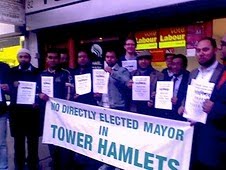
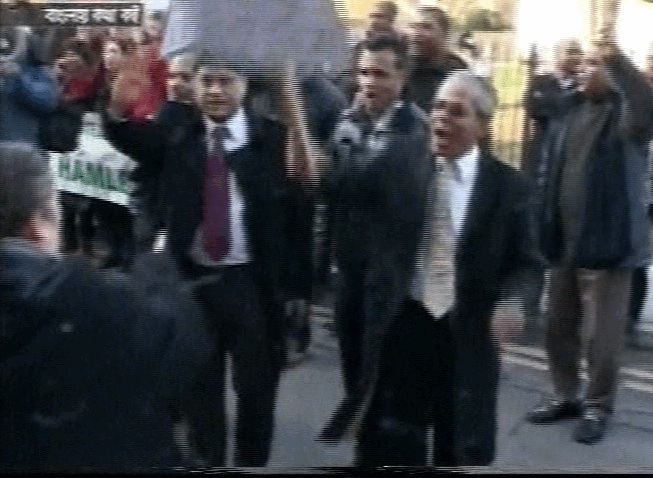



















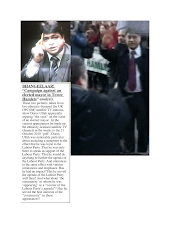
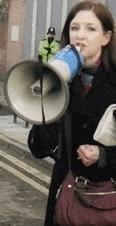

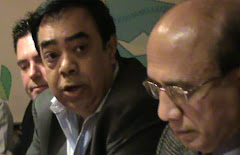

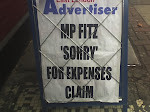
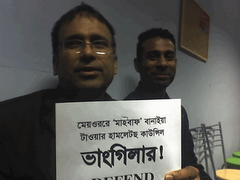
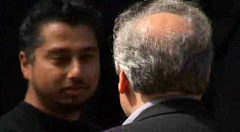
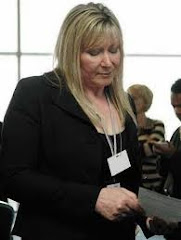
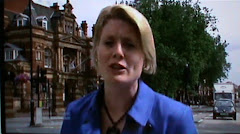
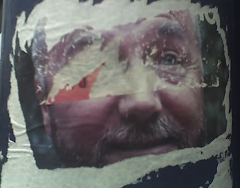

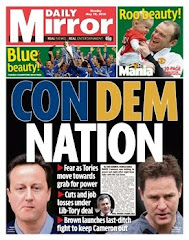
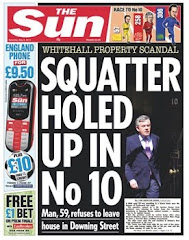
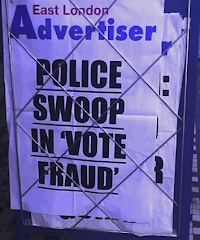
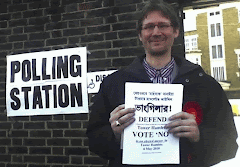
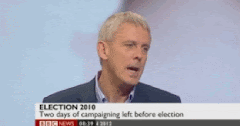

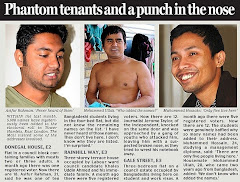
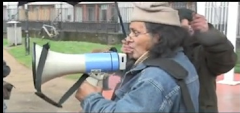


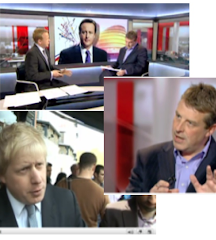

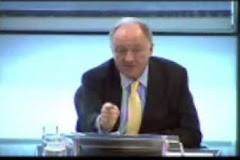
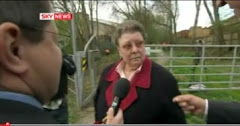

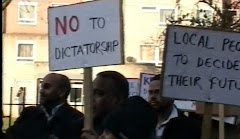


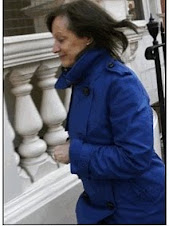
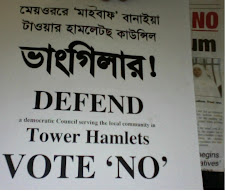
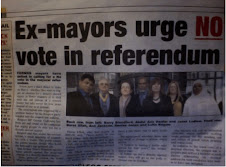
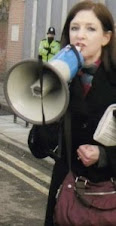
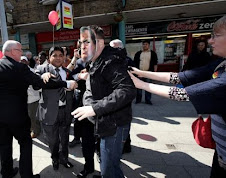

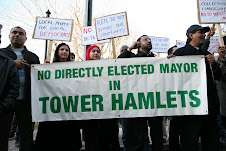
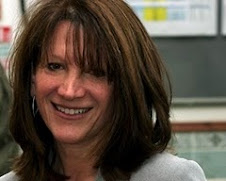
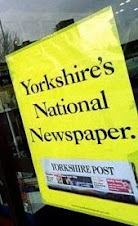

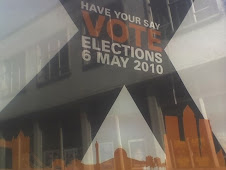
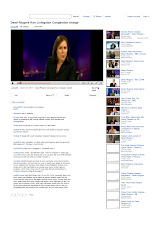
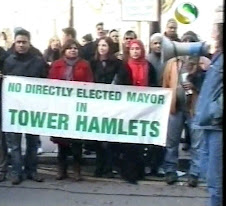
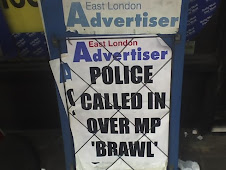
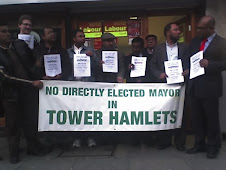
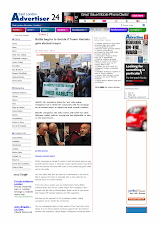
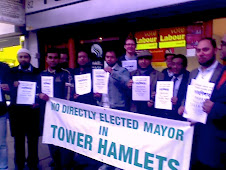
No comments:
Post a Comment